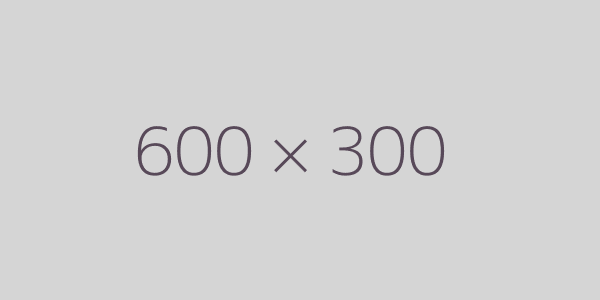In the ever-expanding digital marketplace, Canva templates have emerged as a lucrative opportunity for designers and entrepreneurs alike. What starts as a creative hobby can transform into a sustainable income stream that generates $5,000 or more monthly with the right approach.
The beauty of selling Canva templates lies in their scalability, you create once and sell infinitely. And that’s how you can create a passive income stream that generates earnings for you even while you sleep. This business model requires minimal startup costs yet offers substantial returns for those who master the craft and marketing aspects.
The demand for professionally designed templates continues to surge as businesses of all sizes seek polished visual content without the expense of hiring full-time designers. Entrepreneurs, social media managers, and small business owners crave time-saving solutions that elevate their brand presence.
By positioning yourself at this intersection of need and convenience, you can tap into a market that rewards both creativity and business acumen. This comprehensive guide will walk you through everything you need to know about launching and scaling your Canva template business to reach that coveted $5,000 monthly milestone.
Why Canva Templates Are a Hot-Selling Digital Product
Before we dive into the nitty-gritty of selling Canva templates, it’s essential to understand why they’re in such high demand. Here are some key reasons:
1. The Growing Demand for Professional Design
The digital content explosion has created an insatiable appetite for visually appealing materials across all platforms. Businesses recognize that professional design directly impacts their credibility and customer engagement. However, not everyone can afford custom design services or possesses the skills to create high-quality visuals from scratch. Canva templates bridge this gap perfectly by offering professional-quality designs at accessible price points.
Statistics show that content with relevant images receives 94% more views than content without visuals. This fact alone drives businesses to seek quality templates for their marketing materials. The pandemic accelerated this trend further as companies shifted focus to online presence, creating an even greater demand for digital assets that help them stand out in crowded marketplaces.
2. Low Entry Barriers for Creators
What makes the Canva template business particularly attractive is its minimal entry requirements. You need:
- A Canva Pro account ($119.99/year or $12.99/month)
- Basic design skills (which improve with practice)
- Understanding of market needs
- Internet connection
No expensive software, formal design education, or massive investment is required. This accessibility allows anyone with creativity and determination to enter the market and build a profitable business.
3. Passive Income Potential
The most compelling aspect of selling Canva templates is the passive income structure they offer. Unlike service-based businesses that exchange time for money, digital products like templates:
- Require upfront work but generate income indefinitely
- Scale without a proportional increase in effort
- Sell while you sleep, across time zones
- Allow you to serve unlimited customers simultaneously
This business model exhibits tremendous growth potential. Many successful template sellers started with just a handful of products and gradually expanded their portfolio to achieve consistent $5,000+ monthly revenue.
Explore our comprehensive guide, “The Best Platforms to Sell Digital Products in 2025.” We’ve meticulously covered every detail, from key insights to the smallest essentials, to ensure you have all the information you need.
7 Steps to Create High-Quality Canva Templates That Attract Buyers
Designing Canva templates that not only stand out but also convert into sales requires a clear, methodical approach. Follow these seven steps to craft professional, appealing templates that buyers will love.
1. Identify Your Target Audience
Before designing any template, it’s essential to understand who your potential customers are. Are they small business owners, social media managers, teachers, or event planners? Research your audience’s needs, preferences, and pain points. This will help you tailor your templates with features and aesthetics that resonate with them for instance, classy minimalism might appeal to professionals, while bold and colorful designs could attract creative entrepreneurs. Having a clear target audience simplifies decisions like font selection, color palettes, and layout styles.
2. Research Trending Template Niches
To maximize profitability, focus on template categories that are in high demand. Browse trending templates on platforms like Etsy, Creative Market, or Canva’s own marketplace. Examples might include social media graphic bundles, business pitch decks, eBook designs, resumes, planners, or wedding invitations. Additionally, keep an eye on seasonal trends such as holiday-themed designs or templates tailored for specific yearly events. By aligning your product offerings with market demand, you increase your chances of capturing buyer interest. Some highly profitable niches include:
- Wedding invitations and event materials
- Social media packs (Instagram stories, Pinterest pins)
- Resume templates and media kits
- Workbooks and planners
- Presentation templates
- Restaurant menus and food-related materials
- Real estate marketing materials
3. Prioritize Functionality and Aesthetic Appeal
Template success hinges on both usability and visual quality. A good template should be intuitive to use, easily customizable, and visually striking. Use Canvas grid and alignment tools to ensure that every element of your design is balanced and neatly arranged. Stick to visually harmonious color palettes and readable typography to make your templates universally appealing. For functionality, include customizable placeholders for text, images, or icons so users can adapt the designs to their needs with minimal effort.
4. Add Value with Templates Bundles
Rather than selling single templates, offer bundles that target a specific theme or purpose. For example, a social media manager bundle might include Instagram posts, stories, highlight covers, and carousel templates in a consistent style. Bundles provide customers with more value for their money, which can justify higher pricing while increasing your profit margins. Streamlining a set of cohesive designs also builds brand recognition and establishes your expertise in a given niche.
5. Brand Your Templates for Professionalism
Your digital products should represent your brand and exude professionalism to stand out in a competitive marketplace. Ensure your templates have unique branding elements, such as watermarked previews or a small credit note at the bottom, to prevent unauthorized use and to promote your name. Once a customer purchases the templates, they should be able to remove brand-related elements easily for a seamless customization experience. This balance builds credibility while respecting user needs.
6. Test and Refine Your Designs
Before launching your templates for sale, it’s crucial to test them thoroughly. Ask friends or colleagues to use your templates and gather their feedback. Are the designs easy to edit? Are the fonts and graphics properly aligned? Can the templates be customized by a novice or someone using Canva for the first time? Address any usability issues and refine your templates based on this feedback. Consistently improving the user experience can lead to better reviews and more sales.
7. Optimize Your Listings with Stellar Previews
Your product listing previews are the first impression buyers will have, so make them captivating and informative. Use mockups to showcase how your templates appear in real-world scenarios, such as a desktop screen or mobile device. Include detailed descriptions outlining what the buyer gets, from the number of templates to the specific uses for each. Additionally, highlight the key features, such as “100% customizable in Canva,” or “Downloadable in minutes after purchase.” High-quality previews and persuasive descriptions can heavily influence buying decisions.
Where to Sell Your Templates – Best Platforms in 2025
Selecting the right platforms for your Canva templates significantly impacts your revenue potential. Each marketplace offers unique advantages and a customer base.
1. Etsy: The Beginner-Friendly Powerhouse
Etsy remains one of the most accessible and profitable platforms for template sellers, especially beginners. With over 90 million active buyers, this marketplace provides immediate access to customers actively searching for digital products. The platform also offers user-friendly tools for setting up a shop, uploading products, and managing sales, making it perfect for beginners.
Benefits of Selling on Etsy
- Built-in traffic from motivated buyers
- Simple setup process
- Lower competition compared to specialized design marketplaces
- Favorable algorithm for new sellers who follow best practices
- Ability to build customer relationships
How to Sell Digital Products on Etsy Successfully requires understanding their specific marketplace dynamics.
Etsy SEO Optimization
Etsy operates primarily as a search engine, meaning the visibility of your listings depends heavily on proper optimization. To ensure your products stand out, focus on the following strategies:
- Keyword-rich titles that include what buyers actually search for
- Detailed descriptions addressing features, benefits, and use cases
- All 13 tags are filled with relevant search terms
- Category selection that matches buyer browsing behavior
Research keywords using Etsy’s search suggestion feature, Marmalead, or by studying competitor listings.
Listing Presentation
Your listing presentation plays a crucial role in determining your conversion rates, as it’s often the first impression potential clients have of your expertise and value.
- Use all 10 image slots with detailed previews
- Create eye-catching cover images
- Show multiple examples of the template in use
- Include mockups that visualize the end result
- Add size specifications and format details
2. Creative Market: For Premium Template Collections
As your design skills improve and you create more polished, high-quality work, Creative Market provides opportunities to sell higher-priced products that reflect your expertise. Additionally, the platform gives you access to a larger audience, including professional clients and businesses looking for premium designs, helping you expand your reach and grow your income.
The Creative Market Advantage
- Design-focused customer base willing to pay premium prices
- Professional clientele including agencies and businesses
- Potential for partner status and featured placement
- The platform handles technical aspects of delivery and payments
Success in the Creative Market requires exceptional quality standards and comprehensive product offerings.
Requirements for Acceptance
Creative Market curates its seller community through an application process that evaluates:
- Design quality and professionalism
- Uniqueness of offerings
- Portfolio depth
- The commercial viability of products
Prepare a strong application showcasing your best work and commercial understanding.
Product Packaging Strategies
Creative Market customers expect comprehensive template packages:
- Bundle related templates into collections
- Include multiple color schemes and variations
- Provide extensive documentation
- Add value through bonus elements and features
These bundling practices allow you to command higher prices, often $20-50 per template package compared to $5-15 on Etsy.
3. Your Own Website: Maximum Profit Potential
Building your own storefront represents the ultimate goal for serious template sellers aiming for $5,000+ in monthly income. It not only gives you complete control over your branding and customer experience but also allows you to maximize profits by cutting out platform fees. By creating a dedicated storefront, you can establish a stronger connection with your audience, showcase your products in a personalized way, and scale your business on your own terms.
Benefits of Selling Directly
- Keep 100% of profits (minus payment processing fees)
- Build direct customer relationships
- Complete control over presentation and marketing
- Opportunity to create subscription models
- Email list building for future marketing
Creating Digital Products with Canva becomes even more profitable when you eliminate marketplace commissions.
Platform Options
Several platforms make creating your store straightforward:
- Shopify: Comprehensive but higher monthly cost
- WooCommerce: Flexible WordPress integration
- Easy Digital Downloads: Specifically designed for digital products
- Gumroad: Simple setup with social features
- Payhip: Low fees with affiliate program options
Each platform offers different fee structures and features. Research thoroughly before committing.
Building Traffic to Your Site
The main challenge of independent selling is generating traffic. Successful strategies include:
- Content marketing through blog posts and tutorials
- Pinterest marketing (especially effective for designing products)
- Instagram showcasing your template designs
- Free lead magnets to build email lists
- Limited-time promotions on marketplaces that direct to your website
Many successful sellers maintain a presence on marketplaces while gradually transitioning customers to their websites.
Pricing Strategies to Maximize Sales
Pricing significantly impacts both your sales volume and perception of value. Strategic pricing can make the difference between a hobby income and a full-time salary.
1. Understanding Value-Based Pricing
The most successful template sellers use value-based pricing rather than cost-based approaches. This method prices products based on:
- The problem your template solves
- Time saved by using your template
- Professional quality achieved
- Comprehensiveness of the package
A wedding invitation template saving $500 in designer fees justifies a higher price than a simple social media graphic.
2. Market-Appropriate Price Points
Different platforms and niches support different price ranges:
Etsy Price Ranges
- Basic single templates: $3-8
- Comprehensive template sets: $10-25
- Complete bundles: $25-50
Creative Market Price Ranges
- Single premium templates: $12-25
- Template collections: $25-75
- Extensive bundles: $75-150+
Your Website Price Ranges
- Entry-level products: $15-30
- Premium offerings: $30-100
- Subscription access: $15-50/month
Test different price points within these ranges to find your optimal balance between volume and profit margin.
3. Bundle Strategies That Increase Average Order Value
Bundling is one of the most effective strategies to achieve higher income goals while delivering value to customers. By grouping related templates into cohesive collections, such as social media packs (Instagram, Facebook, Pinterest templates), wedding suites (invitations, RSVPs, programs, thank you cards), or business launch packages (logos, business cards, letterheads), businesses can appeal to targeted needs.
Pairing this with tiered pricing models enhances flexibility by offering options like Basic (core templates only), Standard (templates with additional pages or formats), and Premium (complete collections with bonus elements). This approach not only caters to different customer segments but also encourages upgrades.
To further drive sales, launch discounts, and limited-time offers can be utilized. Strategies such as introductory pricing for new products, bundle discounts for multiple purchases, or seasonal promotions aligned with demand create urgency and reward early adopters. These tactics increase conversion rates while maintaining perceived value.
Scaling to $5,000+ Monthly Income
Reaching the $5,000 monthly benchmark requires a systematic approach to growth and optimization.
Building a Strong Online Presence
To scale income beyond $5,000 per month, a robust online presence is essential. Start by optimizing a professional website that showcases your products or services clearly. Incorporating a user-friendly design, detailed descriptions, and an intuitive checkout process enhances user experience. Utilize social media platforms such as Instagram, TikTok, or LinkedIn to engage with your audience through dynamic content like videos, tutorials, and testimonials. Regular content updates and active interaction with followers foster trust and help build a loyal community that drives consistent sales.
Leveraging Email Marketing
Email marketing remains one of the most effective methods to generate repeat customers and nurture leads. Ensure you build a subscriber list by offering incentives such as exclusive discounts or downloadable content. Once established, send regular newsletters featuring fresh product updates, success stories, and personalized recommendations. Email automation can also be employed to follow up on abandoned carts, re-engage inactive buyers, or notify customers of limited-time offers. A well-curated email strategy maintains customer interest and steadily increases revenue over time.
Collaborating with Influencers and Affiliates
Expanding reach through collaborations with influencers and affiliate marketers can accelerate business growth. Identify influencers within your niche whose audience aligns with your target market. Partnering with micro-influencers can be particularly effective as they typically have highly engaged followers. Similarly, affiliate programs incentivize marketers or customers to promote your products by earning a commission for each sale generated through their referral. These partnerships enhance brand visibility, attract new customers, and create a scalable system for generating income with minimal overhead costs.
The Bottom Line!
Selling Canva templates offers a lucrative and scalable opportunity for earning a consistent income, potentially reaching $5,000 or more per month. By identifying a profitable niche, you can tailor your designs to meet the specific needs of your target audience which ensures high demand. Offering high-quality, unique templates and utilizing visually appealing platforms like Etsy or a personal website allows you to stand out from competitors.
Strategic marketing through SEO, social media promotion, and collaborations with micro-influencers further amplifies your reach. Additionally, leveraging affiliate programs creates an incentive-driven ecosystem for continuous growth. Remember, providing value, maintaining consistent branding, and understanding customer needs are key to long-term success.
With persistence, creativity, and an understanding of the market, selling Canva templates can become a sustainable and profitable business venture for aspiring entrepreneurs. The practical strategies outlined here set a clear path toward financial goals and creative fulfillment.
Meta Description: Learn proven strategies to create, market, and sell profitable Canva templates that generate $5,000+ monthly passive income with this comprehensive guide.







